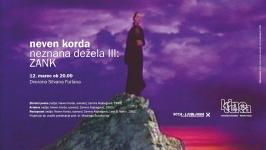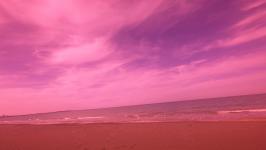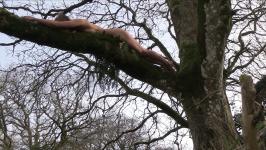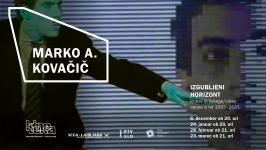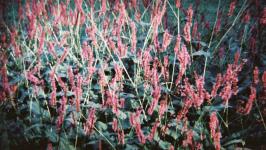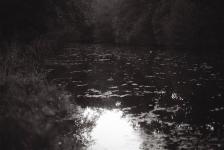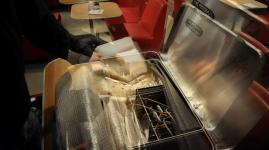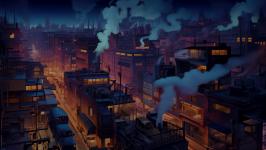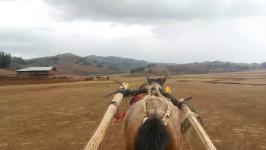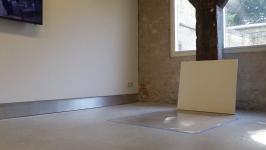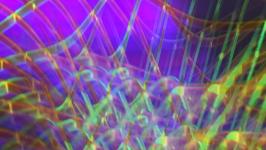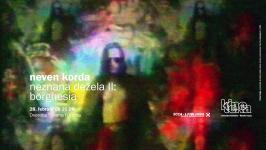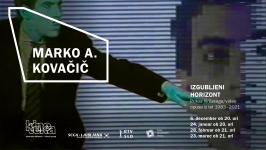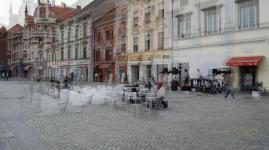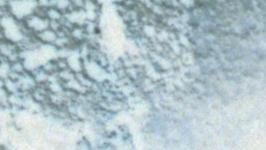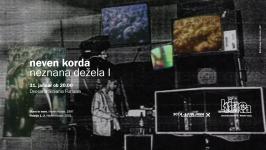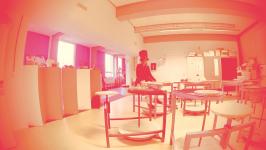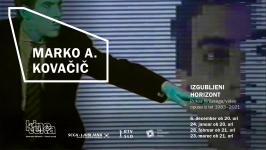Through our conversations with the protagonists of the art scene in Ljubljana, who belong to different generations and expressive currents, we wanted to confront views and memories while considering the tectonic shifts in the fine art field in the last thirty years that accompanied the social transformation in this region.
[From: From Consideration to Commitment: Art in Critical Confrontation to Society, on-line publication https://talkingcriticarts.wordpress.com/, Belgrade, Ljubljana, Skopje, Zagreb: 1990-2010; Publishers: SEEcult.org in cooperation with ForumSkopje; Kurziv - Platform for Matters of Culture, Media and Society; SCCA, Center for Contemporary Arts-Ljubljana / Artservis; The Association of NGOs Clubture, 2011]
Same place – different time
Miha Colner, Nika Grabar
Between the lines of the new histories which began stacking the bookshelves in the so-called Western Balkans in the 1990s, there was no room for reflection on whether the creation of new countries was the success story of individual nations, or a failure of the federal community. Unlike history, art can afford to doubt. Therefore, we cannot talk about art in the context of this time and place without mentioning the political chaos which left its mark on a large part of recent history. The concept of this publication goes on to prove this.
In her interview, Mojca Pungerčar discusses how the concept ‘same place – different time’ provided her with the starting point to open a multitude of other, different themes in her time. What did ‘a different time’ mean then for Slovenia? The disintegration of the former country began with war and a radical change in the economic and political system. The new situation offered a different view of the field of art to both those who had shaped it from ‘within’ and those who began familiarising themselves with it ‘from the outside’. It became evident that the borders between East and West are not absolute, that the art of Eastern Europe cannot be examined in blanket terms, and that each country entered the Cold War arena with its own complex history, which is reflected in its artistic production to this day.
In his interview for the Slovenian magazine Likovne beside, Miško Šuvaković said that the territory of Slovenia was ideal for examining trends and phenomena in the modern and contemporary art of a limited cultural and geographic area. “It is far enough and close enough for me to be able to develop a research matrix.”[1] Small enough and manageable, so that the main lines of development can be discerned. However, even in an area of two million, where, particularly after independence, a lively local scene emerged with strong ties to international art circles, generalisations and omissions are virtually impossible to avoid in a historic overview of the art phenomena of the last twenty years. In this time, production multiplied to the point of becoming hyper-production, which is partly the consequence of changes in cultural and education policy. An obvious heterogeneity makes almost impossible to establish and recognise a dominant artistic trend. There are several parallel trends which form different circles, scenes and informal movements. Despite the diversity of the scene, parallel lines of development remain fluid at several levels: the artists move away from one another and appear in different constellations and contexts, while the body of work of an artist is also open, as it does not necessarily perpetuate a personal style, but works on different projects, using various approaches and media.
At the turn of the 1980s to the 1990s, great changes occurred in society and, consequently, art. From the political point of view, a comprehensive fundamental transformation of society at all levels began, which coincided with a new world order, ideological depolarisation and a rapid transition in a corporate world. All these facts were reflected in art, which in accordance with global shifts, assumed new positions and began working in different condition with a variety of tools which often surpassed classic individual artistic work. With the decline of modernism, numerous practices emerged and gained ground which mostly embraced the influences of the former Western hemisphere on the political map. More direct criticism and greater social engagement, even if only on theoretical and poetical levels, moved from the margins to the institutions and soon become conventional. So the tradition of conceptual art, which once most often presented an opposition to the main current, with the support of the art market and in view of a changed political discourse, became the dominant force and has had a great influence on various contemporary practices in the past twenty years.
When examining new production methods and artistic approaches typical of 'contemporary art' in Slovenia, it makes sense to embrace the introductory text to the catalogue accompanying the Slovene Art1995–2005: Territories, Identities, Nets by Igorl Zabel, which was entitled Contemporary Art. In the text, Zabel explores the changes in institutional and alternative art, seeks to identify key shifts and impetuses which led to new perception, and examines international influences. In Zabel’s opinion, contemporary art in Slovenia definitely emerged from the shadows in 1995, when at the same time two presentations of contemporary Slovenian art in the wider sense took place in Budapest. In Müczarnók Museum, in cooperation with the museum of Modern Art in Ljubljana, an exhibition entitled The Collection of the P.A.R.A.S.I.T.E. Museum was on view, while in the Studio Gallery in cooperation with Škuc Gallery from Ljubljana an exhibition with the telling title Time as Structure, Method as Meaning took place. Both offered a peek into the current scene, highlighting a new expressiveness which wasn’t limited to a single generation. According to Zabel, both reflected an unusual energy, openness, readiness to take risks and experiment. They manifested new relations in art, which underwent great changes at the turn of the 1980s to the 1990s. The most fundamental change was probably the abolition of the prevalent view that a work of art is necessarily an object with special formal characteristics. Works were expanded into space, a situation or a relationship which was not necessarily based on space, but became processual, acceptable, focussing on time and interaction with its environment and the audience.
The other key moment mentioned by Igor Zabel is the exhibition of the 2nd Triennial U3 in the Museum of Modern Art in Ljubljana, which was conceived by the influential Viennese artist, theoretician and curator Peter Weibel, and which included his personal preferences in the conception of contemporary art. Under the title Beyond the White Cube, he presented artists and practices who for the most part had been unable to access major institutions. If, at the end of 1990s, contemporary art was still struggling for a more significant position within national culture, it definitely acquired this position at the turn of the millennium – due to the general social change and international influences, and partly due to the generational shift, contemporary art became a fixture in institutional exhibitions and began to be considered as relevant in the mind of the general public.[2]
The shift from the dominance of formalism and aesthetics to more direct comments on existing reality also brought about new issues examined by the works of art. Contemporary art began to reflect and comment on the phenomena of contemporary world more intensely, sought to understand it in its own way, and in some cases change it; art took advantage of the alienation effect and imbued it with poetic feeling and secretiveness. Social engagement and criticism, which have been present at different levels since the first decades of the twentieth century, radicalised in the 1990s and were manifested through various actions, statements and concepts. In that time, this approach was somewhat logical, as artists followed international trends, combining them with local issues which arose at a sensitive time. The proximity of the Balkan wars, a new country, the search for national identity, economic transitions and new social relationships, and a switch to a consumer society all decisively influenced socially-sensitive artists.
However, these phenomena were not absolute and cannot be applied to the whole artistic scene, where different currents and movements emerged in parallel worlds, which often – as is still true today – do not see eye to eye. In the past fifteen years, a strong line of modernist formalism in painting and sculpture remained; a lively new-media scene with its own rules in terms of form and content emerged; so-called post-media painting developed; video art continued its development, which began in the 1970s and 1980s; and contemporary artistic photography - which established its own language within art - began to position itself. All these movements - and particularly their creative manifestations and intersections - created a heterogeneity which prevent a uniform examination of the artistic production of the period. Artists use different methods and presentations of issues and directly reference various point in the past, present or even future. Perhaps artists who experienced the shift to the mainstream can provide the best answer questions about major shifts in the past thirty years.
In the first part of these interviews, Neven Korda and Mojca Pungerčar are presented, two artists who were already active in the 1980s and have managed to re-establish their production in the new system without any significant breaks or leaps. Even more, it could be said that they definitely used contemporary art tactics and approaches already in the earlier period, when such creativity was still buried deep within the art underground. Korda and Pungerčar come from the Ljubljana alternative scene, which promoted performative practices, video and (at the time) new media art, and later successfully and without greater compromises established itself at the institutional level. In the second part, we present two artists who started working in the new situation of the 1990s and later. Marko Peljhan is one of the first artists who started establishing processual and directly effective new media practices, while Maja Smrekar entered the art scene deep within the new millennium, which is why her view of the various levels of current contemporary art is somewhat different. In the manner of expanding the art field into interdisciplinarity that does not necessarily require a classical fine arts education, Peljhan entered the art world from the field of experimental theatre, while Smrekar - despite studying at the Academy of Fine Arts and Design, which is still oriented towards traditional fine arts disciplines - transformed the acquired knowledge in a unique way and subtly included it in her expression, following the trail of new media or technological art practices.
Through our conversations with the protagonists of the art scene in Ljubljana, who belong to different generations and expressive currents, we wanted to confront views and memories while considering the tectonic shifts in the fine art field in the last thirty years that accompanied the social transformation in this region. Like everyone else, the artists had to transform their view of the world to fit the “different time”. Their work bespeaks a feeling of disorientation, aggression, passivity, a feeling of powerlessness in a society where interpersonal relations had been politicised, when borders created the other, when the economy went on its uncompromising rampage, and when the media established a new architecture of thought. To a large extent, art began to doubt the parameters of the social order and to search for the possibilities of working through the section it was at least partly familiar with. Their questioning and commenting of current social givens is manifested at various levels, almost never entirely directly, through actions or activisms, but always by playing with various metaphors and following unique formal strategies. By referring to certain (technological, fine arts, film) genres and expressions, they construct an open field of reflection, which they offer to their spectators. During a period of increasingly banal mass media content and flood of easily understandable information, it is precisely art which raises doubts, encourages reflection and reading between the lines, that represents a unique critical statement in relation to the current fast-food life, hyper-production (also artistic) and the inflation of images in public space. The critical stance of the selected artists thus thoroughly distances itself from those direct actions in which artists or activists use the same approaches as the society they criticise, turning rather to a more complex rendering of content. Their production, which has no difficulties in using formal or substantive references to the past, present and future, is thus still relevant in the same space and a different time.
Utopian consciousness wants to look far into the distance, but ultimately only in order to penetrate the darkness so near to it, of the just lived moment, in which everything that is both drives and is hidden from itself. In other words, we need the most powerful telescope, that of polished utopian consciousness, in order to penetrate precisely the nearest nearness. Namely, the most immediate immediacy, in which the core of self-location and being-here still lies, in which at the same time the whole knot of the world-secret is to be found.[3]
